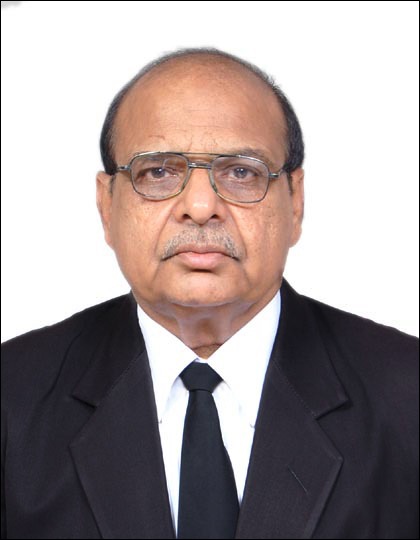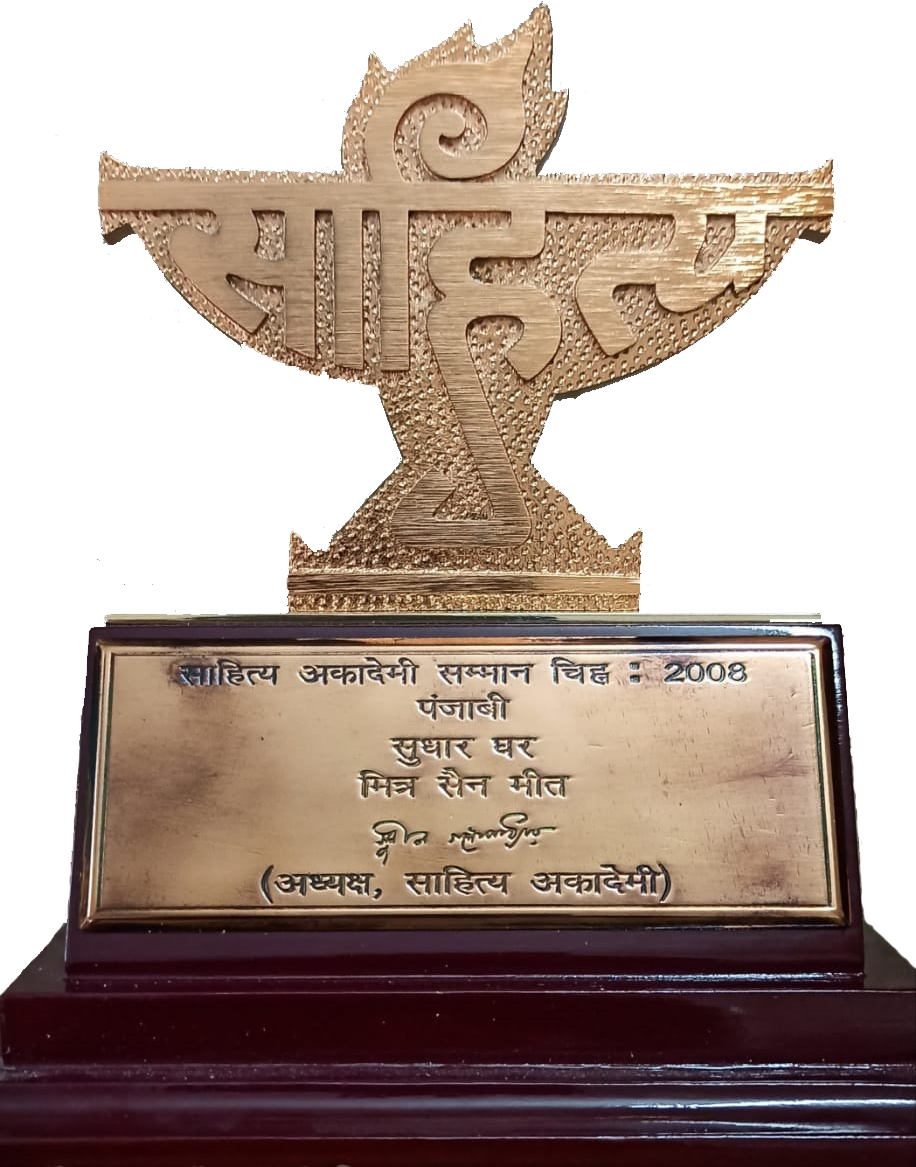ਸ਼ੱਕ ਦਾ ਲਾਭ (Benefit of doubt)
(Section 3 Evidence Act)
ਇਸ ਨਿਯਮ ਦਾ ਪਿਛੋਕੜ
ਫ਼ੌਜਦਾਰੀ ਕਾਨੂੰਨ ਦਾ ਮਹੱਤਵਪੂਰਨ ਇੱਕ ਨਿਯਮ ਇਹ ਹੈ ਕਿ ਇੱਕ ਬੇਕਸੂਰਵਾਰ ਨੂੰ ਸਜ਼ਾ ਦੇਣ ਨਾਲੋਂ ਸੌ ਕਸੂਰਵਾਰਾਂ ਨੂੰ ਬਰੀ ਕਰਨਾ ਚੰਗਾ ਹੈ। ਇਸ ਨਿਯਮ ਅਧੀਨ ਅਦਾਲਤ ਵੱਲੋਂ ਇਹ ਮੰਗ ਕੀਤੀ ਜਾਂਦੀ ਹੈ ਕਿ ਦੋਸ਼ੀ ਵਿਰੁੱਧ ਭੁਗਤੀ ਗਵਾਹੀ ਇੰਨੀ ਸਪੱਸ਼ਟ ਹੋਵੇ ਕਿ ਉਸਦੇ ਅਧਾਰ ਤੇ ਦੋਸ਼ੀ ਦੇ ਮੁਜ਼ਰਮ ਹੋਣ ਬਾਰੇ ਕੋਈ ਸ਼ੱਕ ਨਾ ਰਹੇ। ਜੇ ਗਵਾਹਾਂ ਦੇ ਬਿਆਨਾਂ ਵਿੱਚ ਫਰਕ ਆਦਿ ਹੋਣ ਕਾਰਨ, ਦੋਸ਼ੀ ਦੇ ਮੁਜ਼ਰਮ ਹੋਣ ਬਾਰੇ ਸ਼ੱਕ ਪੈਦਾ ਹੁੰਦਾ ਹੋਵੇ ਤਾਂ ਦੋਸ਼ੀ ਨੂੰ ‘ਸ਼ੱਕ ਦਾ ਲਾਭ’ ਦੇ ਕੇ ਬਰੀ ਕਰ ਦਿੱਤਾ ਜਾਵੇ। ‘ਸ਼ੱਕ’ ਤੋਂ ਕੀ ਭਾਵ ਹੈ? ਸ਼ੱਕ ਕਿਉਂ ਪੈਦਾ ਹੁੰਦੇ ਹਨ?’ ਕਿਸ ਸ਼ੱਕ ਦੇ ਅਧਾਰ ਤੇ ਦੋਸ਼ੀ ਨੂੰ ਬਰੀ ਕੀਤਾ ਜਾ ਸਕਦਾ ਹੈ ਅਤੇ ਕਿਸ ਸ਼ੱਕ ਨੂੰ ਨਜ਼ਰਅੰਦਾਜ਼ ਕੀਤਾ ਜਾ ਸਕਦਾ ਹੈ? ਸ਼ੱਕ ਨੂੰ ਕਿਨ੍ਹਾਂ ਮਾਪਦੰਡਾਂ ਦੇ ਅਧਾਰ ਤੇ ਪਰਖਿਆ ਜਾਵ? ਸ਼ੱਕ ਦਾ ਲਾਭ ਦੇ ਨਿਯਮ ਨੂੰ ਸਮਝਣ ਲਈ ਇਨ੍ਹਾਂ ਪ੍ਰਸ਼ਨਾਂ ਦਾ ਉੱਤਰ ਜਾਨਣਾ ਜ਼ਰੂਰੀ ਹੈ।
ਕਾਨੂੰਨ ਦੀ ਭਾਸ਼ਾ ਵਿਚ ਟਰਮ ‘ਸ਼ੱਕ’ ਦਾ ਅਰਥ
ਦੋਸ਼ੀ ਨੂੰ ਸ਼ੱਕ ਦੇ ਅਧਾਰ ਤੇ ਤਾਂ ਹੀ ਲਾਭ ਪ੍ਰਾਪਤ ਹੋ ਸਕਦਾ ਹੈ ਜੇ ਸ਼ੱਕ ‘ਉਚਿਤ’ ਸ਼ੱਕ ਹੋਵੇ।
ਉਚਿਤ ਸ਼ੱਕ (reasonable doubt) ਦਾ ਅਰਥ:
ਜੋ ਸ਼ੱਕ ਹੇਠ ਲਿਖੀਆਂ ਸ਼ਰਤਾਂ ਪੂਰੀਆਂ ਕਰਦੀਆਂ ਹੋਣ ਤਾਂ ਉਹਨਾਂ ਨੂੰ ‘ਉਚਿਤ ਸ਼ੱਕ’ ਕਿਹਾ ਜਾਂਦਾ ਹੈ:
- a) ਸ਼ੱਕ ਭਾਵਨਾ ਜਾਂ ਕਲਪਿਤ ਉਤਸ਼ਾਹ ਤੋਂ ਮੁਕਤ ਹੋਣ (free from over-emotional response or zest for abstract speculation)
ਅ) ਸ਼ੱਕ ਵਾਸਤਾਵ ਅਤੇ ਅਸਲੀ ਹੋਣ (substantial and actual)
ੲ) ਸ਼ੱਕ ਗਵਾਹੀ ਤੋਂ ਪੈਦਾ ਹੁੰਦੇ ਹੋਣ
ਸ) ਇਹ ਕਾਲਪਨਿਕ, ਤੁਛ ਜਾਂ ਕੇਵਲ ਸੰਭਾਵਿਤ ਸ਼ੱਕ ਨਾ ਹੋਣ। ਸ਼ੱਕ ਤਰਕ (reason) ਅਤੇ ਸਧਾਰਨ ਸਮਝ (common sense) ਤੇ ਅਧਾਰਿਤ ਹੋਣ।
Case: Krishnan and another v/s State 2003 Cri. L.J. 3705 (SC)
Para “23. Doubts would be called reasonable if they are free from a zest for abstract speculation. Law cannot afford any favourite other than truth. To constitute reasonable doubt, it must be free from an over-emotional response. Doubts must be actual and substantial doubts as to the guilt of the accused persons arising from the evidence, or from the lack of it, as opposed to mere vague apprehensions. A reasonable doubt is not an imaginary, trivial or a merely possible doubt; but a fair doubt based upon reason and common sense. It must grow out of the evidence in the case.”
ਉਚਿਤ ਸ਼ੱਕ ਨੂੰ ਪਰਖਣ ਦੇ ਮਾਪਦੰਡ:
ੳ) ਇਹਨਾਂ ਨੂੰ ਗਣਿਤ ਦੇ ਫਾਰਮੂਲਿਆਂ ਵਰਗੀ ਨਿਸ਼ਚਿਤਤਾ ਨਾਲ ਨਹੀਂ ਪਰਖਿਆ ਜਾਣਾ ਚਾਹੀਦਾ।
ਅ) ਇਹਨਾਂ ਨੂੰ ਪਰਖਣ ਲਈ ਜੱਜ ਦਾ ਤਜ਼ਰਬਾ ਅਤੇ ਸਧਾਰਨ ਸਮਝ ਵੱਧ ਮਹੱਤਵਪੂਰਨ ਹੈ।
Case: Krishnan and another v/s State 2003 Cri. L.J. 3705
“24. The concepts of probability, and the degrees of it, cannot obviously be expressed in terms of units to be mathematically enumerated as to how many of such units constitute proof beyond reasonable doubt. There is an unmistakable subjective element in the evaluation of the degrees of probability and the quantum of proof. Forensic probability must, in the last analysis, rest on a robust common sense and, ultimately, on the trained institutions of the Judge. While the protection given by the criminal process to the accused persons is not to be eroded, at the same time, uniformed legitimisation of trivialities would make a mockery of administration of criminal justice.”
ਸ਼ੱਕ ਪੈਦਾ ਕਰਨ ਵਾਲੇ ਸਰੋਤ
ਸ਼ੱਕ ਗਵਾਹਾਂ ਦੇ ਬਿਆਨਾਂ ਵਿਚ ਫਰਕ, ਸਵੈ-ਵਿਰੋਧ ਅਤੇ ਸੋਧ ਕਾਰਨ ਪੈਦਾ ਹੁੰਦਾ ਹੈ। ਬਿਆਨਾਂ ਵਿੱਚ ਫਰਕ (discrepancy), ਸਵੈ-ਵਿਰੋਧ (contradiction) ਅਤੇ ਸੋਧ (improvement) ਦੇ ਅਰਥ:
ੳ) ਫਰਕ: ਕਿਸੇ ਘਟਨਾ ਨੂੰ ਬਿਆਨ ਕਰਨ ਵਿੱਚ ਆਇਆ ਫਰਕ
ਅ) ਸਵੈ-ਵਿਰੋਧ: ਇੱਕੋ ਗਵਾਹ ਦੇ ਦੋ ਬਿਆਨਾਂ ਵਿਚਲਾ ਫਰਕ
ੲ) ਸੋਧ: ਸਰਕਾਰੀ ਪੱਖ ਦੇ ਹੱਕ ਵਿੱਚ ਜਾਣ ਵਾਲੇ ਨਵੇਂ ਜਾਂ ਕਮੀਆਂ ਨੂੰ ਪੂਰਾ ਕਰਨ ਲਈ ਪਹਿਲੇ ਬਿਆਨਾਂ ਵਿੱਚ ਕੀਤਾ ਵਾਧਾ।
ਬਿਆਨਾਂ ਵਿਚਲੇ ਫਰਕ (discrepancy) ਦੀਆਂ ਕਿਸਮਾਂ
ੳ) ਸਧਾਰਨ ਫਰਕ (normal discrepancies): ਗਵਾਹ ਦਾ ਬਿਆਨ ਜਿੰਨਾ ਮਰਜ਼ੀ ਸੱਚਾ ਅਤੇ ਇਮਾਨਦਾਰੀ ਨਾਲ ਦਿੱਤਾ ਗਿਆ ਹੋਵੇ ਉਸ ਵਿੱਚ ਕੁਝ ਫਰਕਾਂ ਦਾ ਆਉਣਾ ਸੁਭਾਵਿਕ ਹੈ। ਇਹ ਫਰਕ ਕਿਸੇ ਘਟਨਾ ਨੂੰ ਗ੍ਰਹਿਣ ਕਰਨ ਵਿੱਚ ਹੋਈ ਗਲਤੀ, ਸਮੇਂ ਦੇ ਬੀਤਣ ਕਾਰਨ ਯਾਦਦਾਸ਼ਤ ਦੇ ਘਟਣ ਜਾਂ ਮਾਨਸਿਕ ਸਥਿਤੀ ਜਿਵੇਂ ਕਿ ਸਦਮੇ ਜਾਂ ਡਰ ਕਾਰਨ ਜਾਂ ਫਿਰ ਅਜਿਹੇ ਹੋਰ ਕਾਰਨਾਂ ਕਰਕੇ ਆਉਂਦਾ ਹੈ। ਅਜਿਹੇ ਫਰਕਾਂ ਨੂੰ ਸਧਾਰਨ ਫਰਕ ਆਖਿਆ ਜਾਂਦਾ ਹੈ।
ਅ) ਮਹੱਤਵਪੂਰਨ ਫਰਕ (material discrepancies): ਅਜਿਹੇ ਫਰਕ ਜੋ ਕਿ ਸਧਾਰਨ ਨਹੀਂ ਹੁੰਦੇ ਅਤੇ ਜਿਹਨਾਂ ਦੀ ਇੱਕ ਸਧਾਰਨ ਮਨੁੱਖ ਕੋਲੋਂ ਤਵੱਜੋ (expected) ਨਹੀਂ ਕੀਤੀ ਜਾ ਸਕਦੀ।
Case : State of Rajasthan v/s Kalki, 1981 Cri.L.J.1012 (SC – FB)
- Normal Discrepancies :- “In the depositions of witnesses there are always normal discrepancies however honest and truthful they may be. These discrepancies are due to normal errors of observation, normal errors of memory due to lapse of time, due to mental disposition such as shock and horror at the time of the occurrence, and the like.”
Material Discrepancies :- “Material discrepancies are those which are not normal, and not expected of a normal person.”
ਬਿਆਨਾਂ ਵਿਚ ਫਰਕਾਂ ਦੀ ਮਹੱਤਤਾ
ਸਧਾਰਨ ਫਰਕਾਂ ਦਾ ਮੁਕੱਦਮੇ ਦੀ ਭਰੋਸੇਯੋਗਤਾ ਉੱਪਰ ਕੋਈ ਪ੍ਰਭਾਵ ਨਹੀਂ ਪੈਂਦਾ ਜਦੋਂ ਕਿ ਮਹੱਤਵਪੂਰਨ ਫਰਕਾਂ ਦਾ ਪੈਂਦਾ ਹੈ।
Case : Sucha Singh v/s State of Punjab 2003 Cri. L.J. 3876 (SC)
Para “18. ….. Courts have to label the category to which a discrepancy may be categorized. While normal discrepancies do not corrode the credibility of a party’s case, material discrepancies do so.”
‘ਬਿਆਨਾਂ ਵਿਚ ਫਰਕ‘ ਨੂੰ ਪਰਖਣ ਦੇ ਸਿਧਾਂਤ
(ੳ) ‘ਇੱਕ ਗੱਲ ਵਿੱਚ ਝੂਠਾ, ਸਭ ਵਿੱਚ ਝੂਠਾ’ (‘false in one thing, false in everything’) ਦਾ ਸਿਧਾਂਤ ਭਾਰਤ ਵਿੱਚ ਲਾਗੂ ਨਹੀਂ ਹੁੰਦਾ।
Case : Sucha Singh v/s State of Punjab 2003 Cri. L.J. 3876
Para “18. ….. The maxim “falsus in uno falsus in omnibus” has no application in India and the witnesses cannot be branded as liar. ….”
(ਅ) ਅਦਾਲਤ ਨੂੰ ‘ਰੂੜੀ ਵਿੱਚੋਂ ਦਾਣਾ’ (separate grain from chaff) ਲੱਭਣਾ ਚਾਹੀਦਾ ਹੈ।
Case : Sucha Singh v/s State of Punjab 2003 Cri. L.J. 3876
Para “18. ….. It is the duty of Court to separate grain from chaff. Where chaff can be separated from grain, it would be open to the Court to convict an accused notwithstanding the fact that evidence has been found to be deficient to prove guilt of other accused persons….”
(ੲ) ਜੇ ਗਵਾਹੀ ਦਾ ਵੱਧ ਹਿੱਸਾ ਕਮੀਆਂ ਨਾਲ ਭਰਿਆ ਹੋਵੇ ਪਰ ਬਾਕੀ ਬਚਦਾ ਹਿੱਸਾ ਦੋਸ਼ੀ ਦੇ ਜ਼ੁਰਮ ਨੂੰ ਸਿੱਧ ਕਰਨ ਲਈ ਕਾਫੀ ਹੋਵੇ ਤਾਂ ਦੋਸ਼ੀ ਨੂੰ ਬਾਕੀ ਦੇ ਬਿਆਨ ਦੇ ਅਧਾਰ ਤੇ ਸਜ਼ਾ ਕੀਤੀ ਜਾ ਸਕਦੀ ਹੈ।
Case : Sucha Singh v/s State of Punjab 2003 Cri. L.J. 3876
Para “1 8. ….. Even if major portion of evidence is found to be deficient, in case residue is sufficient to prove guilt of an accused, notwithstanding acquittal of number of other co-accused persons, his conviction can be maintained. It is the duty of Court to separate grain from chaff. Where chaff can be separated from grain, it would be open to the Court to convict an accused notwithstanding the fact that evidence has been found to be deficient to prove guilt of other accused persons. Falsity of particular material witness or material particular would not ruin it from the beginning to end.”
ਸ਼ੱਕ ਦੇ ਲਾਭ ਦੇ ਸਿਧਾਂਤ ਸਬੰਧੀ ਅਦਾਲਤਾਂ ਲਇ ਦਿਸ਼ਾ ਨਿਰਦੇਸ਼
(ੳ) ‘ਸ਼ੱਕ ਦਾ ਲਾਭ’ (benefit of doubt) ਦਾ ਸਿਧਾਂਤ ਅਦਾਲਤ ਨੂੰ ਕੇਵਲ ਸੇਧ (guideline) ਦੇਣ ਲਈ ਹੈ ਨਾ ਕਿ ਅੰਧ-ਵਿਸ਼ਵਾਸ਼ੀ (fetish) ਹੋ ਕੇ ਮੰਨੀ ਜਾਣ ਲਈ।
Case : Sucha Singh v/s State of Punjab 2003 Cri. L.J. 3876
Para “20. ….. Proof beyond reasonable doubt is a guideline, not a fetish. (See Inder Singh and another v. State (Delhi Admn.) (AIR 1978 SC 1091). Vague hunches cannot take place of judicial evaluation. “A Judge does not preside over a criminal trial, merely to see that no innocent man is punished. A Judge also presides to see that a guilty man, does not escape. Both are public duties.” (Per Viscount Simen in Stirland v. Director of Public Prosecutor (1944 AC (PC) 315) quoted in State of U.P. v. Anil Singh (AIR 1988 SC 1998). Doubts would be called reasonable if they are free from a zest for abstract speculation. Law cannot afford any favourite other than truth.”
(ਅ) ‘ਸ਼ੱਕ ਦਾ ਲਾਭ’ ਦੇ ਸਿਧਾਂਤ ਦੀ ਖੁੱਲ ਕੇ ਵਰਤੋਂ ਨਹੀਂ ਹੋਣੀ ਚਾਹੀਦੀ।
Case : Sucha Singh v/s State of Punjab 2003 Cri. L.J. 3876
Para “21. ….. The dangers of exaggerated devotion to the rule of benefit of doubt at the expense of social defence and to the soothing sentiment that all acquittals are always good regardless of justice to the victim and the community, demand special emphasis in the contemporary context of escalating crime and escape. The judicial instrument has a public accountability. The cherished principles or golden thread of proof beyond reasonable doubt which runs through the web of our law should not be stretched morbidly to embrace every hunch, hesitancy and degree of doubt. . . . . . . . . . .”
(ੲ) ਗਵਾਹ ਦੇ ਬਿਆਨ ਵਿੱਚ ਜੇ ਕੁਝ ਉਕਾਈਆਂ, ਫਰਕ ਜਾਂ ਸੋਧਾਂ ਹੋਣ ਤਾਂ ਕੇਵਲ ਇਸੇ ਅਧਾਰ ਤੇ ਗਵਾਹ ਦੀ ਗਵਾਹੀ ਨੂੰ ਨਕਾਰਿਆ ਨਹੀਂ ਜਾ ਸਕਦਾ। ਜੇ ਗਵਾਹੀ ਨੂੰ ਧਿਆਨ ਨਾਲ ਘੋਖਣ ਤੇ ਅਦਾਲਤ ਇਸ ਸਿੱਟੇ ਤੇ ਪੁੱਜਦੀ ਹੋਵੇ ਕਿ ਜਿੰਨੀ ਗਵਾਹੀ ਭਰੋਸੇਯੋਗ ਹੈ ਉਸਦੇ ਅਧਾਰ ਤੇ ਦੋਸ਼ੀ ਦਾ ਜ਼ੁਰਮ ਸਿੱਧ ਹੁੰਦਾ ਹੈ ਤਾਂ ਦੋਸ਼ੀ ਨੂੰ ਸਜ਼ਾ ਕੀਤੀ ਜਾ ਸਕਦੀ ਹੈ।
Case : State of H.P. v/s Bhola 2008 Cri. L.J. 3567 (HP – HC)
Para “33. It is a settled law that merely because, there are omissions, contradictions or discrepancies in the evidence of some or all of the prosecution witnesses, it does not mean that the entire evidence by the prosecution should be discarded. It is only after exercising care and caution and sifting the evidence to separate the truth from untruth, exaggeration, embellishments and improvements, the Court comes to the conclusion that what can be accepted implicates the accused it will convict them…”
(ਸ) ਲੰਬੀ ਜਿਰਹਾ ਦੌਰਾਨ ਗਵਾਹ ਦੇ ਬਿਆਨਾਂ ਵਿੱਚ ਫਰਕ ਆਉਣਾ ਕੁਦਰਤੀ ਹੈ।
Case : Jai Shree Yadav v/s State of U.P., 2004 Cri. L.J. 4826 (SC)
Para “18. ….. In the cross-examination defence has brought about certain omissions, contradictions and improvements in the evidence of this witness. These shortcomings in the evidence of this witness will have to be considered in the background of the fact that this witness was subjected to nearly 217 questions over a period of 14 months i.e. his cross-examination starting on 14-8-1994 and ending on 28-11-1995. Both the courts below have taken judicial notice of this fact, not only in regard to this witness but in regard to other witnesses also and have come to the concurrent conclusion that when a witness is subjected to such lengthy arduous cross-examination over a lengthy period of time there is always a possibility of the witnesses committing mistakes which can be termed as omissions, improvements and contradictions therefore those infirmities will have to be appreciated in the background of ground realities which makes the witness confused because of the filibustering tactics of the cross-examining Counsel.”
ਡਾਕਟਰੀ ਰਾਏ ਨਾਲੋਂ ਚਸ਼ਮਦੀਦ ਗਵਾਹ ਦੀ ਗਵਾਹੀ ਦੀ ਵੱਧ ਭਰੋਸੇਯੋਗਤਾ
ਜੇ ਚਸ਼ਮਦੀਦ/ਜ਼ੁਬਾਨੀ (ocular) ਸ਼ਹਾਦਤ ਢੁੱਕਵੀਂ, ਸੱਚੀ ਅਤੇ ਭਰੋਸੇਯੋਗ ਹੋਵੇ ਤਾਂ ਇਸਦਾ ਡਾਕਟਰੀ ਗਵਾਹੀ (medical evidence) ਨਾਲ ਕੁਝ ਮੇਲ ਨਾ ਖਾਣਾ ਕੋਈ ਮਹੱਤਵ ਨਹੀਂ ਰੱਖਦਾ।
Case: Krishnan V/s State, 2003 Cri.L.J. 3705 (SC)
Para “18. ….. In any event, the ocular evidence being cogent, credible and trustworthy, minor variance, if any, with the medial evidence are not of any consequence.”







More Stories
ਹੋਰ ਫੁਟਕਲ ਪ੍ਰਾਵਧਾਨ – Evidence Act